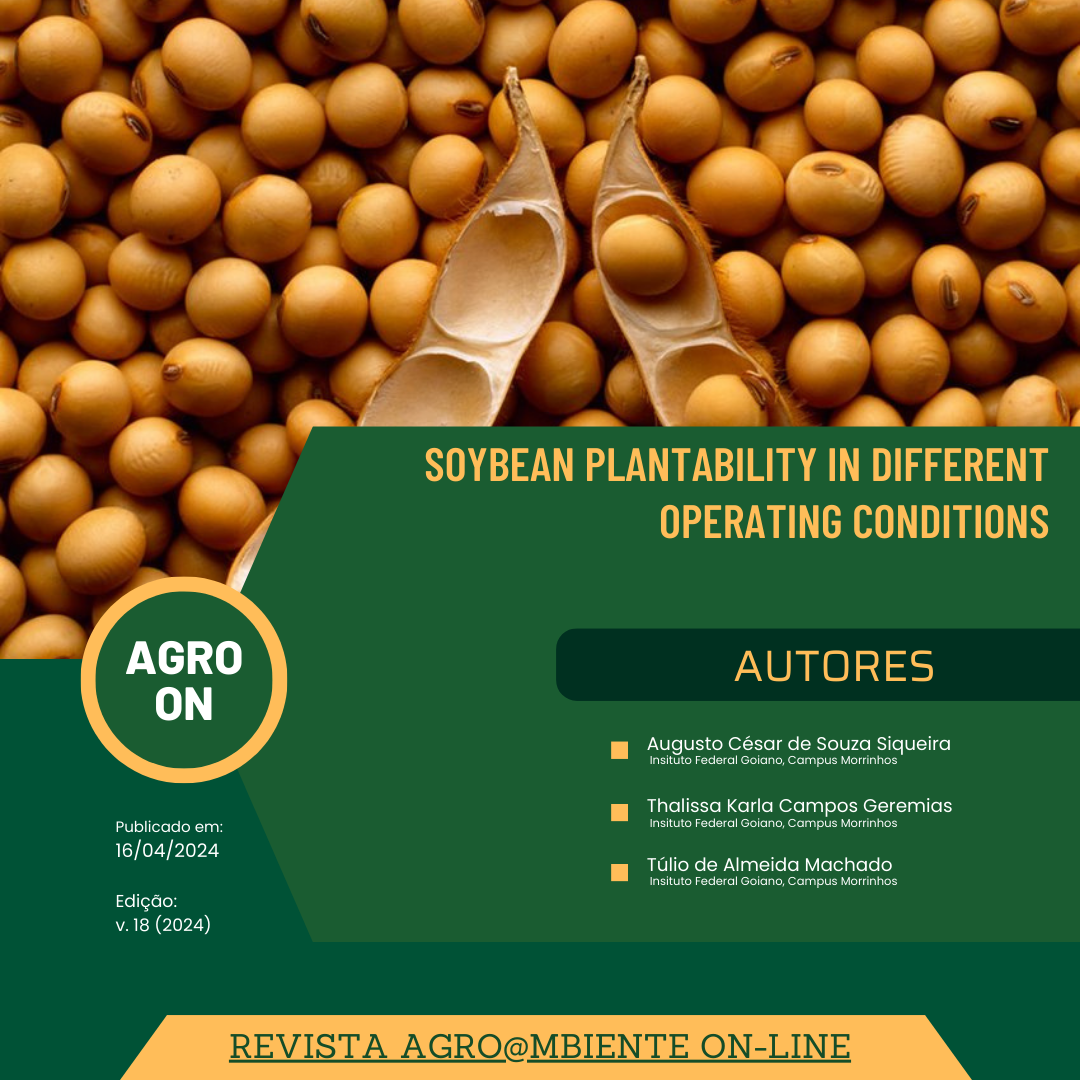Soybean plantability in different operating conditions
DOI:
https://doi.org/10.18227/1982-8470ragro.v18i00.7825Palavras-chave:
Glycine max. Seed density. Seeding. Operational speed.Resumo
Many crops of global importance, such as soybeans (Glycine max), come from the sowing process. This stage in the production cycle is the most important since the deposition of the seed in the soil will directly impact final productivity. Therefore, it must be carried out correctly to guarantee a better uniformity of seed distribution. Thus, the objective was to evaluate the interference of operating speed and different furrow closing pressures on the longitudinal distribution of seeds, productivity, soil mobilization, and sowing depth in direct and conventional planting systems. The experimental treatment units had an area of 10 m² distributed in a randomized block design and arranged in a system of sub-subdivided plots, with four replications, being: two types of soil preparation (direct planting and conventional system), and, in each one, two operating speeds (3.42 and 6.82 km h-1) and three pressures in the furrow closing system (12.57; 14.94 and 16.52 kfg). The type of soil preparation system influenced the depth and spacing between seeds. The operating speed of 3.42 km h-1 determined the better longitudinal distribution of the seeds. Soil mobilization and blistering were significantly changed with increasing pressure from the compacting wheels, having the most significant effect at a pressure of 16.52 kgf.

Downloads
Publicado
Edição
Seção
Licença
Copyright (c) 2024 REVISTA AGRO@MBIENTE ON-LINE

Este trabalho está licenciado sob uma licença Creative Commons Attribution-NonCommercial-NoDerivatives 4.0 International License.
Declaro em meu nome e em nome dos demais autores que aqui represento no ato da submissão deste artigo, à REVISTA AGRO@MBIENTE ON-LINE que: • 1. O conteúdo do artigo é resultado de dados originais e não publicados ou submetidos a outros periódicos. • 2. Além do autor principal, todos os co-autores participaram suficientemente do trabalho para tornar públicas as respectivas responsabilidades pelo conteúdo. • 3. Em caso de aceitação do artigo, os autores concordam que os direitos autorais a ele referentes se tornarão propriedade exclusiva da Revista Agro@mbiente On-line, vedada qualquer reprodução, total ou parcial, em qualquer outra parte ou meio de divulgação, impressa ou eletrônica, sem que a prévia e necessária autorização seja solicitada e que, se obtida, devem constar os agradecimentos à Revista Agro@mbiente On-line do Centro de Ciências Agrárias/UFRR.


